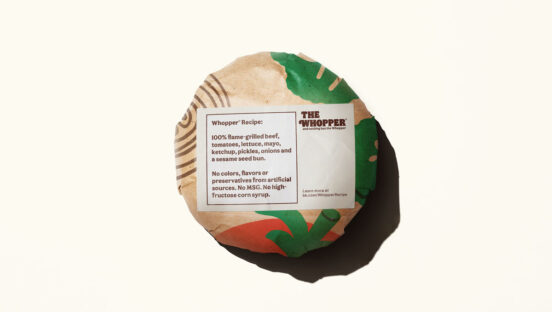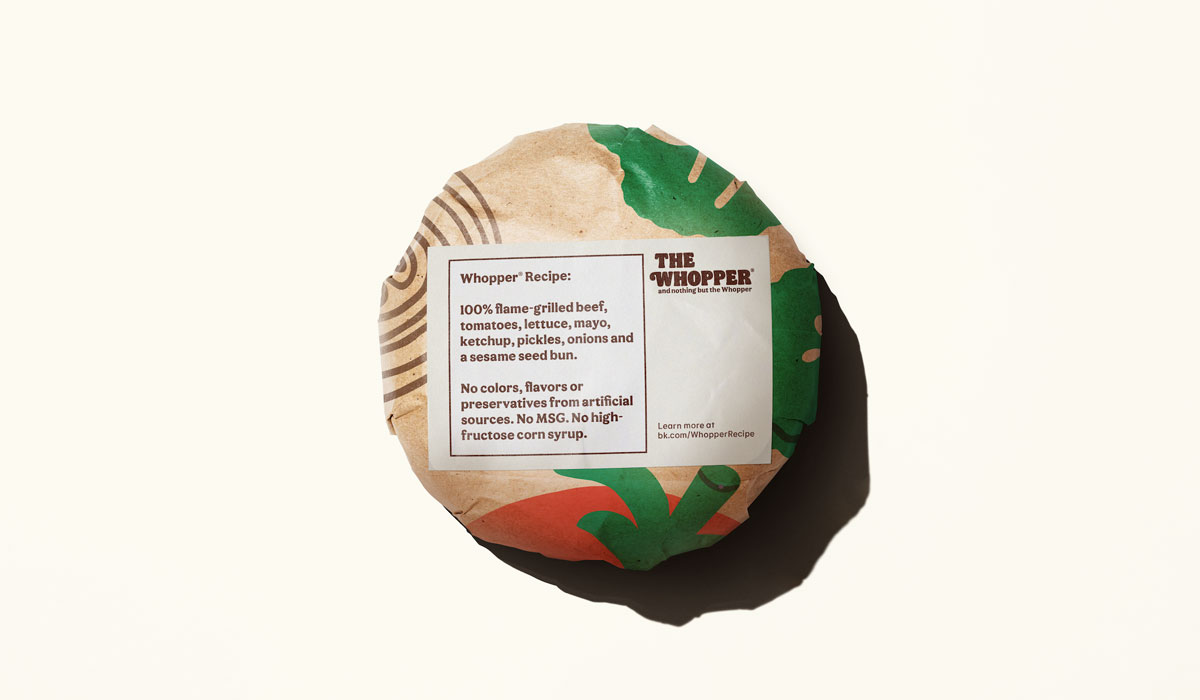Restaurant Brands International isn’t abandoning its ambition to hit 40,000 restaurants in the next decade. It’s taking a year-long pause to grapple with COVID-19 and brace for a wide-open real estate market.
CEO Jose Cil said Thursday RBI would close “several hundred more restaurants than we might in a typical year” across its Burger King, Tim Hortons, and Popeyes footprints in 2020. While Cil did not share a figure, he said the company expected to end 2020 with a similar number of restaurants relative to where it ended 2019, which would be a big change for one of the sector’s biggest net-unit growth players.
For perspective, RBI grew its system by 1,342 restaurants last year. Burger King alone added 1,042. About a decade ago, the company had only 12,000 restaurants. There are currently 27,059. In each of the last three years, RBI boasted net restaurant growth of over 5 percent.
CFO Matt Dunnigan said the retraction would “be significant relative to prior-year closures.” However, in terms of overall units and systemwide sales globally, it will be “relatively small, so a couple of percentage points.”
Cil added RBI is working closely with franchisees through the back half of 2020 to build strong pipelines and eventually restart development. “And given the overall health of our systems and the opportunities we see emerging, we’re confident that we’ll have our development cycle back on track by the end of this year to deliver net restaurant growth in 2021, in line with what we delivered in 2018 and 2019,” he said.
In many cases, Cil added, RBI could reopen aging restaurants in new trade areas with refreshed models—something unfolding pre-virus.
Back in August 2019, RBI said Burger King was embarking on a U.S. “closure program” intended to trim lower-volume stores in favor of units designed to unlock digital changes. Its “Burger King of Tomorrow” store, modeled after the “Garden Grill” package, features double drive-thru lanes and outdoor digital menuboards. At the time, Cil did not guide a timeline for domestic closures, or a number. But at RBI’s investor day last May, the company said, over the next two years, it expected to shuttered 200–250 restaurants—a shift it believed would position Burger King for future expansion as well as boost profitability near-term for franchisees.
That would accelerate off U.S. rates in 2018 and 2017, when it opened net 104 and 70 locations, respectively, averaging about 140 closures of underperforming units. In 2019, Burger King’s domestic business expanded by a net of just 16 stores to 7,346 restaurants—7,294 of which were franchises. Average-unit volumes were $1.39 million on those restaurants.
And from June 30, 2019, forward to this current year, Burger King’s U.S. footprint has trimmed by 15 restaurants to 7,257 from 7,272 locations.
Burger King has trailed negative 0.2 percent net growth domestically over that span. Internationally, the figure is 7.1 percent. In 2019, those numbers were 0.7 and 9.5 percent, respectively.
So Burger King’s portfolio optimization was already underway for RBI. But like many things, COVID-19 jolted the timeframe.
RBI shifted focus in recent months to reopenings. In Q2, more than 4,500 restaurants returned to bring coverage to 93 percent globally. And by the end of the period, RBI was back to 90 percent of prior-year systemwide sales. Dining rooms are currently open in about a third of restaurants in the U.S. and Canada.
“There is a ton of opportunities in real estate in North America as well as internationally, and so that gives us confidence in the ability to get back to growth levels that we saw in 2018, 2019,” Cil said.
THE COVID-19 ROAD FOR RBI SO FAR:
Burger King Gets Back to Pre-COVID Sales
Restaurant Leaders: We Must Be Part of the Solution
Popeyes, the Pandemic Proof Fast-Food Chain
Popeyes and its Chicken Sandwich are Still Soaring
How Burger King Plans to Keep Guests, Employees Safe as it Reopens
Coronavirus Crisis No Match for Popeyes’ Chicken Sandwich
Popeyes’ Sales Were Surging in Q1
Burger King Parent Advances Cash to Franchisees, Defers Rent
This past quarter, which ended June 30, Tim Hortons’ same-store sales declined 29.3 percent; Burger King dropped 13.4 percent (negative 9.9 percent U.S.); and Popeyes continued its year-plus, chicken-sandwich fueled momentum at positive 24.8 percent (28.5 percent domestic).
All represent positive trajectory from earlier trends. Tim Hortons progressed from negative mid-40s at peak to negative mid-teens in July, Cil said. One reason Tim Hortons has lagged Burger King and Popeyes is the fact two-thirds of its Canada restaurants—where it has 3,997 of its 4,943 restaurants—feature drive thrus. In the U.S., it’s about 90 percent.
Also, breakfast occasions continue to absorb a sizable hit during COVID-19. High-frequency coffee-led tickets account for an even greater percentage of Tim Hortons’ sales in Canada than the U.S., Cil said, and those have taken the brunt of impact. Canada has generally touted a more measured approach to reopening than the U.S. as well.
Burger King’s domestic comps jumped from the negative mid-30s at the end of March to negative mid-teens by Q2 close. But by August, Cil said, they were flat on a year-over-year basis.
Nearly all of Burger King’s dining rooms were closed during much of Q2. Burger King, however, pushes more than 6,500 drive thrus across the U.S. and was able to grow comparable sales in the channel in the positive low 20s, Cil said. Drive-thru mix lifted to more than 85 percent of total sales versus two-thirds in 2019. RBI has brought delivery to nearly 2,000 new Burger Kings since February and now has 6,100 U.S. locations onboard.
“From a menu and occasion perspective, breakfast was the daypart most negatively impacted by the pandemic and we underperformed in this category as American consumers put their routines on hold,” Cil said of Burger King. “However, we were able to drive growth in other areas and saw a strong contribution from family and group orders this quarter, which we helped accelerate with the launch of new bundles.”
In June and July, Burger King began reopening dining rooms in roughly a third of locations.
Popeyes continued to front RBI’s performance in Q2, as it has throughout the last few quarters. Systemwide sales increased 24 percent to $1.2 billion thanks to 25 percent comps gain and unit growth of nearly 7 percent. And both figures would have been materially higher if not for temporary closures in international markets.
Popeyes hit a low point in March when same-store sales ran flat. But they soon recovered sharply into the positive 30s in April and low 40s in May. They ran in the “high 20s” at the end of July, Cil said, with nominal monthly sales per restaurant continuing at record highs.
This top-line boost brought Popeyes AUVs to $1.7 million—a substantial and rapid hike from 2019 levels of $1.54 million.
Cil said Popeyes witnessed significant growth across every category of its menu in Q2, not just the chicken sandwich. The company also opened its first China restaurant in May and is “launching into a new chapter of international growth for the brand,” Cil said.
Overall, RBI’s 12,000 or so drive thrus across the U.S. and Canada has helped it weather crisis conditions. Within the first few weeks of COVID-19, RBI rolled a contactless pickup option at the window and shifted marketing to focus on safety and accessibility.
By the end of April, as noted, comparable drive-thru sales were up more than 20 percent at Burger King and 100 percent at Popeyes, Cil said. They rose double-digits at Tim Hortons.
Additionally, RBI added nearly 3,000 new restaurants onto delivery in those markets since February and now has roughly 10,000 locations, or about two-thirds of its network, offering the service. Cil said RBI features north of 34,000 unique points of delivery given multiple aggregators and mobile apps.
In Q2, digital sales in the U.S. represented 8 percent of Burger King’s total take and 14 percent at Popeyes. Digital sales in RBI’s home markets grow more than 120 percent, year-over-year, in the period and more than 30 percent quarter-over-quarter.
On the franchisee side, RBI temporarily moved to a 100 percent variable rent program at about 3,700 locations in April where it has property control. In those cases, rent expenses could flex down to reflect changes in sales levels. The company also differed rent collections for up to 45 days and offered liquidity advances to Burger King and Tim Hortons operates on a as-needed basis. In total, RBI made more than $130 million available to restaurant owners.
The company reported quarterly earnings of 33 cents per share in the period and revenue of $1.05 billion, down from $1.4 billion in the year-ago quarter.











